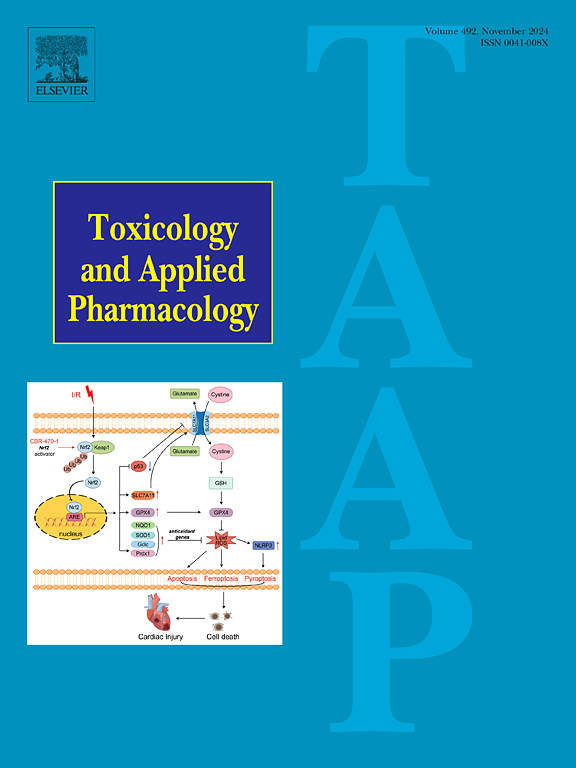Hepatotoxicity from long-term administration of hepatoprotective low doses of oleanolic acid in mice
IF 3.3
3区 医学
Q2 PHARMACOLOGY & PHARMACY
引用次数: 0
Abstract
Oleanolic acid is a triterpenoid existed in many medicinal herbs/plants. Oleanolic acid at low doses are hepatoprotective but at high doses produce cholestasis. This study examined hepatotoxicity potential of low doses of oleanolic acid after log-term administration. Male Kunming mice were orally given oleanolic acid at 100, 200 and 300 μmol/kg daily for 14 weeks. Body weights were monitored, and liver injury was determined via blood biochemistry. Histopathology was examined via H&E, Masson, and Sirius red stains. Oleanolic acid accumulation in plasma and liver was determined by LC-MS and hepatic gene expression by qPCR. Oleanolic acid at low doses did not affect animal body weights, but increased liver index. Serum alanine aminotransferase and alkaline phosphatase were increased, while total bilirubin was unchanged. Chronic oleanolic acid produced hepatocyte degeneration, spot necrosis, and fibrosis. Plasma oleanolic acid was increased more than that in the liver. Oleanolic acid increased hepatic expression of Nrf2, Nqo1, Gclc and Mgst1; Expression of bile acid synthesis genes (Cyp7a1, Cyp8b1, Cyp27a1, Cyp7b1, FXR, SHP) was also suppressed at higher doses. The expression of TGF-β1 and Smad3 was increased, while Smad7 decreased, suggesting the progression to liver fibrosis. High dose of oleanolic acid was less effective in producing these changes, probably due to increased liver injury. Overall, oral administration of low doses of oleanolic acid for 14 weeks produced liver injury and fibrosis. These harmful effects were associated with increased oleanolic acid in plasma and liver, and the disruptions of bile acid metabolism, the Nrf2 and TGF-β/Smad signaling pathways.

求助全文
约1分钟内获得全文
求助全文
来源期刊
CiteScore
6.80
自引率
2.60%
发文量
309
审稿时长
32 days
期刊介绍:
Toxicology and Applied Pharmacology publishes original scientific research of relevance to animals or humans pertaining to the action of chemicals, drugs, or chemically-defined natural products.
Regular articles address mechanistic approaches to physiological, pharmacologic, biochemical, cellular, or molecular understanding of toxicologic/pathologic lesions and to methods used to describe these responses. Safety Science articles address outstanding state-of-the-art preclinical and human translational characterization of drug and chemical safety employing cutting-edge science. Highly significant Regulatory Safety Science articles will also be considered in this category. Papers concerned with alternatives to the use of experimental animals are encouraged.
Short articles report on high impact studies of broad interest to readers of TAAP that would benefit from rapid publication. These articles should contain no more than a combined total of four figures and tables. Authors should include in their cover letter the justification for consideration of their manuscript as a short article.

 求助内容:
求助内容: 应助结果提醒方式:
应助结果提醒方式:


